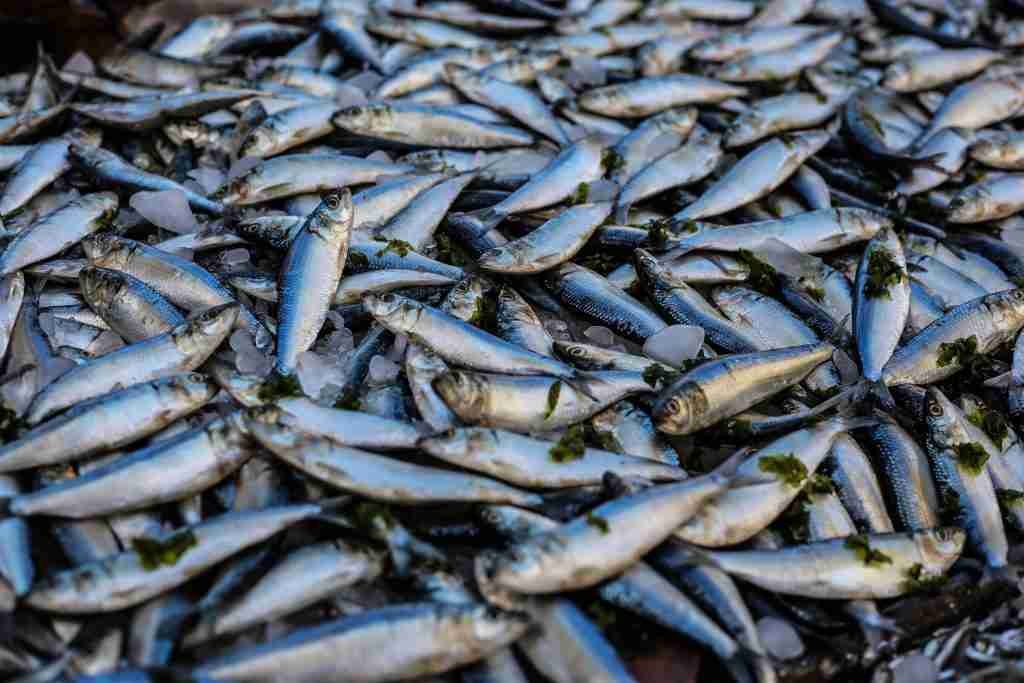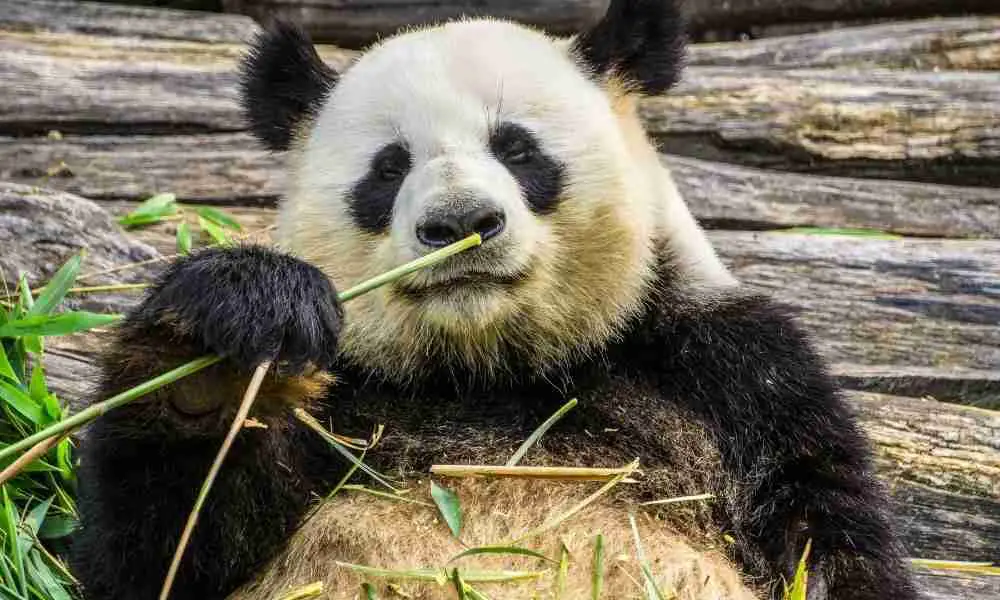We all know about pandas’ enormous love for bamboo. But you might have been surprised to learn that millions of years ago they were carnivores.
So, if the ancestors of pandas ate meat, what caused them not to eat meat anymore?
Several types of research have shown that it is primarily due to the changes in their umami taste genes.
Throughout the years this taste receptor had lost its functionality. That is why now they don’t get the flavor of meat and have turned to bamboo.
Let’s learn about it in detail.
3 Reasons Why Pandas Don’t Eat Meat
In the distant past, the ancestors of today’s giant pandas were completely omnivorous. They used to hunt and eat meat on a regular basis. In fact, their primary source of protein was meat.
However, the changes in their diet from meat to bamboo happened very slowly over many centuries.
Changes in Genes
Beginning between 2.4 million and 2 million years ago, there was a shift in the way things were. They had receptors for the umami taste, which allowed them to enjoy the savory flavors of the meat.
In the year 2010, a team of researchers working in the Department of Ecology and Evolutionary Biology at the University of Michigan made the discovery that explained the panda’s eating habits.
In the study, genome mapping was used to compare the genetic make-up of different carnivores to that of giant pandas.
They discovered that the T1R1 gene had a mutation in their research. Umami is a flavor that is detected by the T1R1 protein, which is encoded by this gene.
Because of the mutation, T1R1 is now a pseudogene, which means it is a gene that is no longer expressed. As a direct consequence of this, pandas are unable to detect the umami flavor found in meat.
The gene that encodes their umami taste receptor lost its ability to function. As a consequence, they have gradually lost interest in eating it.
However, changes in genes are not the only reason, they also gradually stopped hunting.
Pandas Stopped Hunting
Scientists believe another reason behind their shift in diet is the hunting process. The iconic black and white bears converted to eating bamboo because it does not need them to compete with other animals for meat.
We all know pandas for their sluggish nature. So, hunting would have been a challenging activity for them.
Now, when they stopped, they looked for a good alternative to meat which is bamboo.
Bamboo As a Good Alternative
Researchers in the journal Current Biology has come up with an explanation for pandas’ change in diet.
Apparently, the protein and glucose content of all that bamboo is closer to that of a meat-based diet than, say, that of a grass-eating cow.
In Foping National Nature Reserve, China, a team of international researchers used monitoring collars to record the type of bamboo they eat.
According to Susan Milius of Science News, the bears ate a lowland bamboo variety for eight months of the year, primarily consuming the high-protein young shoots while they were available.
In comparison to bamboo leaves, these shoots contain about 32 percent protein. A new variety of plants having similar nutritional value fed the pandas in the summer months as they moved upward.
Using stools from two of the pandas, the researchers discovered that the pandas’ digestive systems were extracting more protein from the bamboo and leaving behind carbohydrates and fat.
According to this research, bamboos are also highly abundant and are high in protein and low in carbohydrates. So, it’s almost equivalent to meat.
However, pandas need to consume between 20 and 40 pounds of bamboo every single day only to maintain their current level of health.
Can’t Pandas Eat Meat Today?

Yes, pandas can still eat meat today.
Pandas are considerably different from other animals in terms of the structure of their digestive systems and the food they eat.
They, like other members of their family, have the digestive capacity to break down and absorb meat.
Are Pandas Supposed to Eat Meat?
They certainly do! Although they no longer have the taste receptor of meat, their digestive system is still designed to eat meat.
Pandas eat very little meat and are virtually exclusively vegetarians. Nevertheless, they will occasionally hunt for pikas and other small rodents.
In fact, because they are related to bears, giant pandas have the digestive system of carnivores.
Furthermore, at the beginning of 2011, BBC reported something that was completely out of the norm. They claimed to have seen a wild panda chewing on the bones of a recently deceased animal.
These wild pandas could be located in the province of Sichuan in China, which is where the researchers from the Wanglong Nature Preserve observed and recorded their activity.
About one-tenth of one percent of the whole panda population is carnivorous. Pandas have a digestive system that allows them to quickly break down and absorb the nutrients from meat.
Now, you may think about the consequences if the pandas eat meat. Let’s learn about it.
What Would Happen If Pandas Eat Meat?
When first asked, what are some of the risks associated with a panda eating meat? They are omnivores by nature, thus they don’t specialize in anything in particular.
They will obtain sustenance from it in the same way that you and I would. If a panda were to eat meat, it wouldn’t hurt it in any way.
New research suggests that nearly 2 million years ago, giant pandas stopped eating meat and instead shifted their diet to consist entirely of bamboo. And became herbivores as a result.
But like their ancestors, they have the digestive capacity to break down and absorb meat.
So, nothing would happen if they eat meat. However, since they have now entirely shifted to bamboo, eating excessive meat can lead to some issues.
However, apart from meat, you may wonder what if the pandas eat fish?
Do Pandas Eat Fish?

We all know bamboo shoots and leaves are pandas’ main food.
However, they will occasionally consume other types of plants, fish, or small mammals. Pandas that are free in the forest may be seen catching fish and eating.
But pandas in the reservoirs are given bamboo only. Bamboo makes up the overwhelming majority of their diets.
How Did Pandas Go Vegetarian?
According to research done in the Department of Ecology and Evolutionary Biology, University of Michigan, it may have had something to do with the deactivation of an umami taste receptor gene.
This gene is referred to in the scientific community as “pseudogenization.” The umami flavor is what gives foods like meat, soy sauce, and mushrooms their distinctively savory quality.
It would appear that at some time in the evolution of pandas, the umami receptor lost its ability to operate.
The amount that the gene has mutated allows the scientists to imply that this event happened simultaneously with the adoption of bamboo consumption by pandas.
It is not known if this change is a cause or an effect. Nonetheless, scientists believe that the transition to bamboo may have taken place before the gene was lost.
In any case, the absence of the gene strengthened the panda’s commitment to a vegetarian diet.
It further reduced the panda’s appreciation for the flavor of the meat.
Now, for all of these reasons it may come to your mind that why do they eat bamboo instead of meat?
Why do Pandas Eat Bamboos Instead of Meat?

Bamboo, which is accessible in South China throughout the year, replaced the high-protein, omnivorous diet of the pandas’ predecessors millions of years ago.
Also, their mouths and teeth developed to help them crush bamboo. And the muscle in their wrist grew into somewhat of an adding machine — a “pseudo-thumb”.
It helps them grasp the stalks of their favorite plants. Their jaws and teeth also evolved to help them chew bamboo.
Bamboo is also available year-round. They may eat for up to 15 hours each day, and an adult panda can eat up to 45 kilograms of bamboo in a single day.
These are the reasons pandas eat bamboo instead of meat.
Final Thoughts
To sum up, isn’t it amazing how pandas once used to eat meat, and now they have turned vegetarian?
Giant pandas are well-known for their love of a strict vegetarian diet. To sustain themselves, they eat bamboo stalks for 12 to 14 hours a day.
So, it is clear that these creatures are a striking example of how evolution may change carnivorous species into vegetarians. And they did it by making only minor changes to adapt to life in the bamboo forest.
To conclude, this article has been wholly dedicated to the panda’s shift from meat to bamboo and the reasons behind it.
Want to know more about a panda’s diet? Consider reading How Do Giant Pandas Get Their Food?

